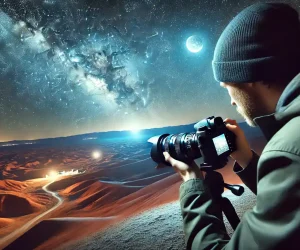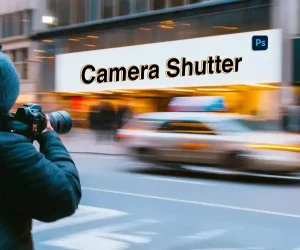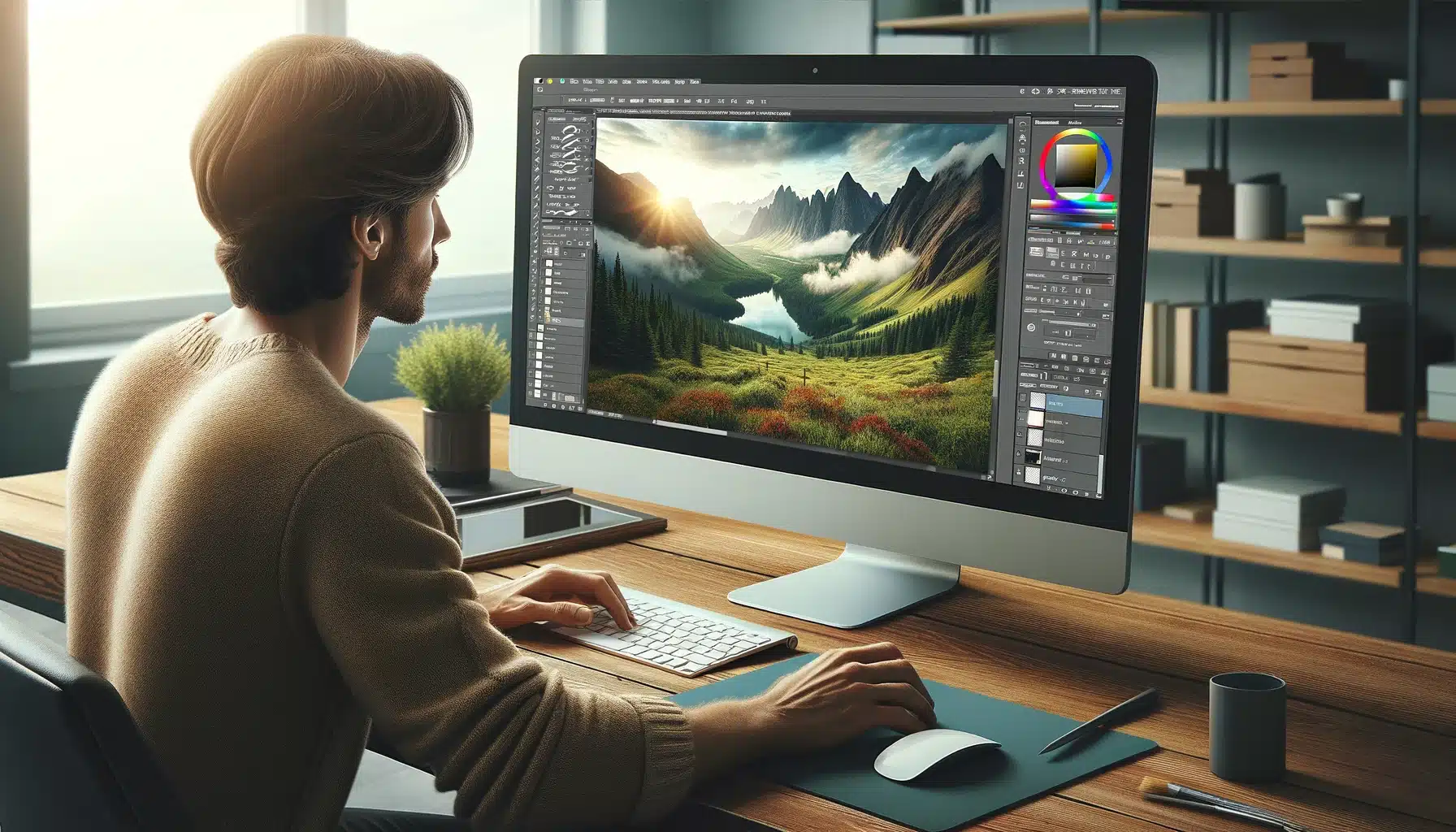
Introduction To How To Edit Landscape Photos
Knowing how to edit landscape photos is not just about tweaking settings; it’s about breathing life into every pixel. You should make the viewer feel as if they are stepping into the scene.
How to edit landscape photos is an art form that requires a deep understanding of the tools at your disposal. Whether you’re enhancing the hues of a sunrise or defining the rough textures of a mountain range—each adjustment you make serves to elevate the natural beauty of your shot.
Here, we will explore the transformative power of refining landscape photography, guiding you through the journey of turning your raw captures into masterpieces.
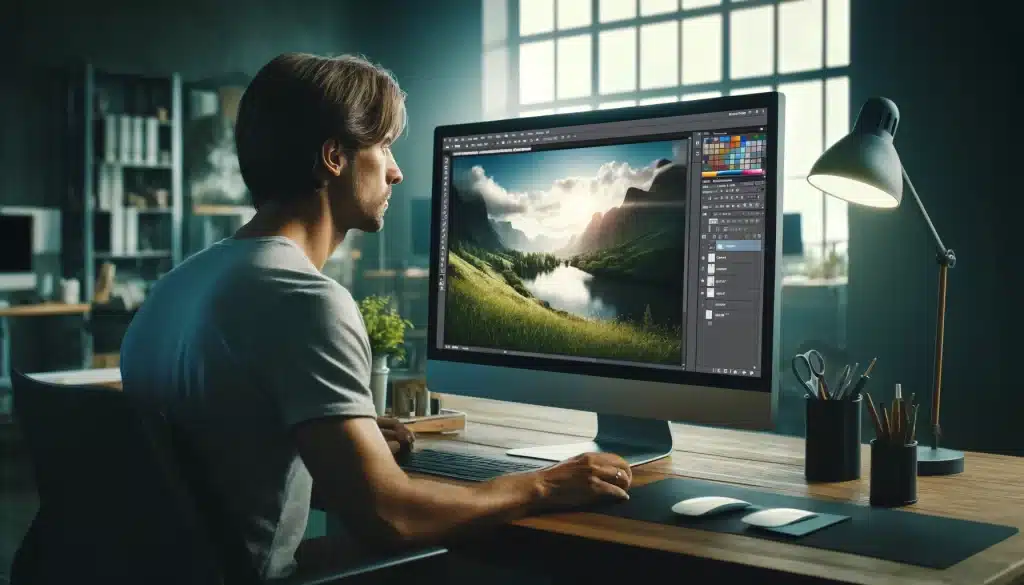
Table of Contents
Essential Tools to Edit Images in Landscape
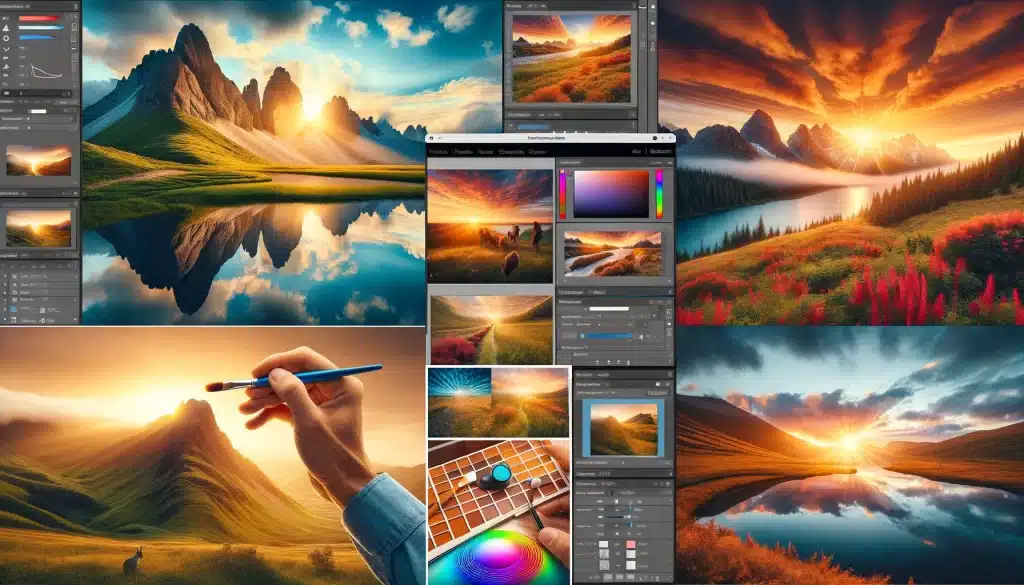
Software
Adobe Lightroom is renowned for its user-friendly interface and powerful cataloging features, making it ideal for managing large batches of pictures. It excels in global adjustments like exposure and color balance. It is a good choice for enhancing landscape images. It is a perfect answer to queries like how to edit landscape photos.
Adobe Photoshop, on the other hand, offers unparalleled precision in editing. It has advanced capabilities for composite photographs, layer masking, and pixel-level manipulation. Both tools are essential for lensmen aiming to achieve professional-grade results in their landscape photograph.
Filters and Presets
Filters can simulate effects like the golden hour glow or a misty morning, adding atmosphere to your natural or urban landscapes. Presets, meanwhile, can be custom-created or downloaded, offering a quick way to apply complex edits across different pictures. It saves time and energy.

Adjustment Layers
These layers in Photoshop are particularly useful for targeted edits. For example, you can enhance the sky’s color and contrast using a curves adjustment layer, or selectively brighten dark areas with a levels adjustment layer, all while maintaining the ability to revert changes at any stage of the editing process.
Healing Tools
The healing brush is perfect for fixing small blemishes like spots or uneven terrain. On the other hand, a clone stamp is more suited for larger or more complex areas needing replacement. These tools are essential for creating a pristine landscape image that focuses on refining nature photography.
Detail Tools
Details enhancement goes beyond mere sharpening. It involves selectively increasing clarity to bring out textures to maintain smoothness and employing smart sharpening techniques to avoid artifacts. This approach ensures that every element, from the grand vistas to the subtlest details, is presented with clarity and impact.
Mastering Adobe Lightroom: A Solution on How to Edit Landscape Photos
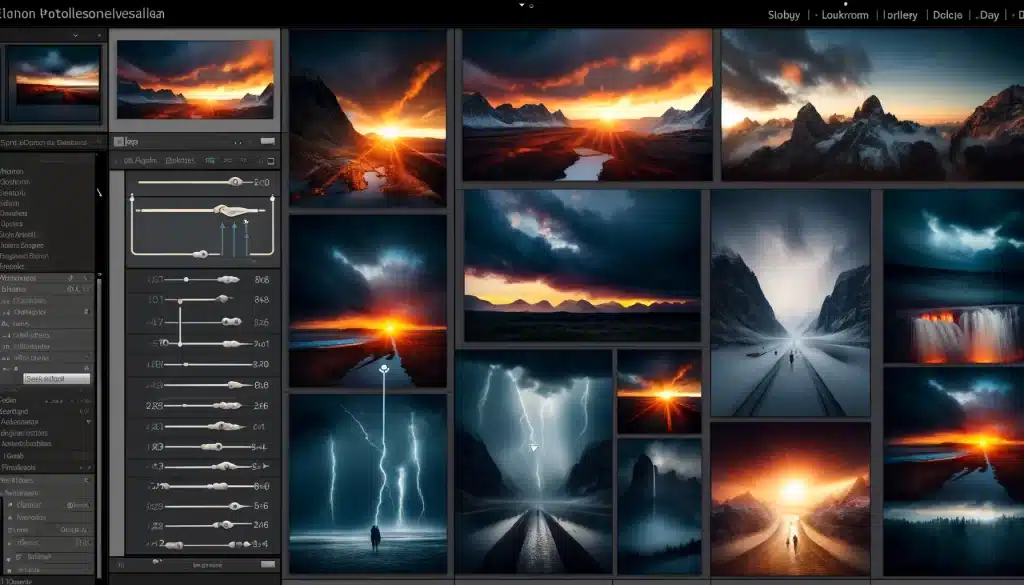
Organizing Your Workflow
- Import and Organize: Efficiently modify photographs, especially useful for sorting pictures taken with varying ISO levels, to streamline the editing process. Create collections or use keywords to organize them efficiently. This method helps in quickly accessing the photographs for refinement and ensures a streamlined process, particularly useful when working with large batches of pictures from a trip or project.
- Non-destructive Editing: Lightroom's non-destructive environment allows for free experimentation without altering the original file. It makes it ideal for learning how to modify landscape photos. This feature means you can try various edits and revert to the original image if needed, encouraging creativity and exploration in editing.
Basic Adjustments
- Exposure and Contrast: Adjust these settings to capture the right mood. For instance, increasing exposure can bring out details in a too-dark sunrise shot. On the other hand, adjusting contrast can add depth and drama to the scene.
- White Balance: Tweaking landscapes shots, can change the photo's feel, like warming up a cold, snowy landscape to make it appear sunlit. It ensures that the landscape's colours reflect the desired time of day or season. Correct the white balance to suit the lighting conditions, crucial for snaps taken in low-light conditions.
Local Adjustment Brush
It’s perfect for modifying outdoor photographs selectively, like enhancing the texture of rocks or the greenery of trees. Selectively modify areas of a photo, such as fixing lens flare. This tool allows for pinpoint adjustments, helping to draw attention to specific elements.
Additional Useful Features of Lightroom

Color Grading for Impact
- HSL/Color Panel: Adjusting the blues and greens can transform a summer photo into an autumnal scene. It gives you the power to dramatically alter the mood and feel of the image. This is a most needed feature on concerns like how to edit landscape photos.
- Vibrancy and Saturation: These tools can make your colors pop or give a more subdued, natural look to your landscapes. They are essential for ensuring that the colours in your pictures accurately represent the scene's true beauty and vibrancy— or for artistically altering them to suit your vision.
Detail Enhancement
- Sharpening and Noise Reduction: Apply these carefully to maintain everything without introducing noise, especially in sky or water areas. Proper use of these tools can greatly enhance the clarity and quality of your landscape photos. It makes them appear more professional and polished.
- Clarity and Texture: Enhance the definition of elements like mountain ridges or tree bark for a more tactile and immersive feel. These adjustments can add depth and dimension to your pictures, making the landscape elements more lifelike and engaging to the viewer.
Leveraging Presets for Efficiency
- Using Presets: Apply presets for a consistent look or as a starting point for further edits. For example, a preset that enhances the golden tones of a landscape can be perfect for sunset pictures. One of the most used features to deal with how to edit landscape photos.
- Creating Your Own: Customize and save your settings as presets, which can speed up editing and ensure a uniform style across your portfolio. This not only saves time but also helps in establishing a signature style for your landscape photography. It makes your work instantly recognizable and beautiful.
Specific Lightroom Features and Their Purposes
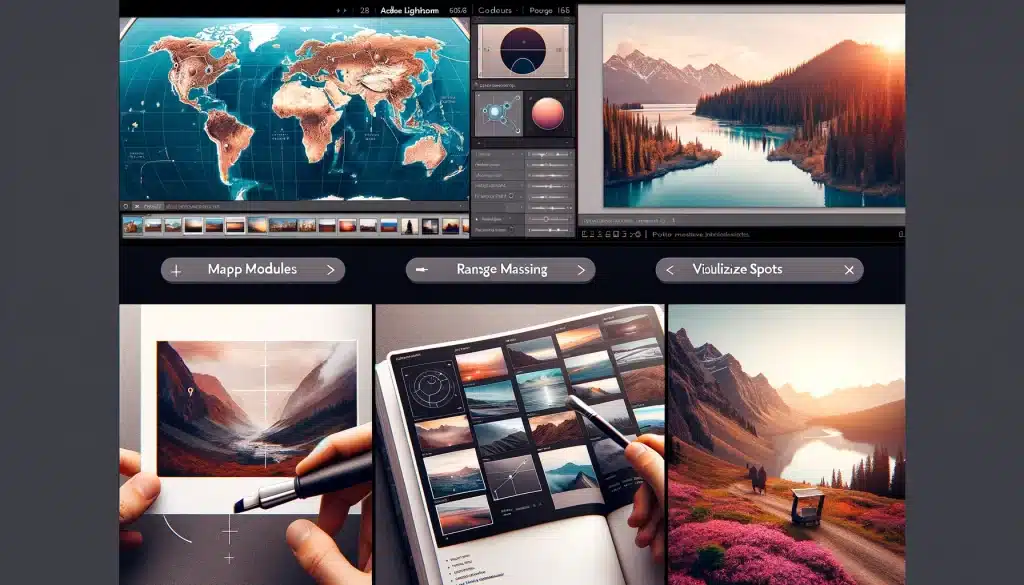
Lightroom is a powerful photo editing software used by photographers to enhance and organize their images. One key feature of Lightroom is the “Develop Module.” This part of the software allows users to adjust elements like exposure, contrast, and color saturation to make their photos look better. It’s especially useful for fixing photos that are too dark or too bright, making colors pop, or correcting the tone to match the scene’s mood.
Another important feature in Lightroom is the “Library Module.” This section helps users manage their photo collections efficiently. Photographers can sort their images, add tags, and create albums, making it easier to find specific photos later. This organizational tool is crucial for professionals who deal with thousands of photos and need to keep track of them for various projects or clients.
The following table represents the unique features of Lightroom that are needed by professionals for enhancements:
| Lightroom Feature | Purpose in Landscape Editing |
|---|---|
| Map Module | To geotag and organize pictures based on location |
| Range Masking | For making precise local adjustments based on color, luminance, or depth |
| Visualize Spots | To identify and remove sensor dust or spots in pictures |
| Book Module | To design and format photo books |
Expert Tips on Adobe Photoshop for Landscape Photos
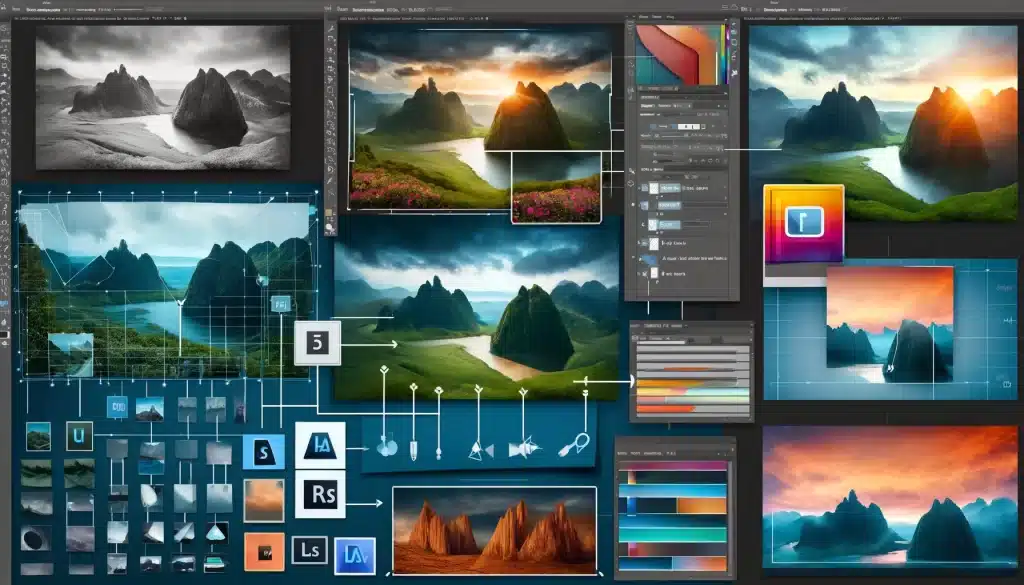
Professionals when comes to the query of how to modify landscape photos, they mostly choose Photoshop. This is the top choice among many professionals.
Layer Management for Adjusting Scenic Pictures
- Organizing Layers: Keep your layers well-organized by naming them and grouping related adjustments. This practice makes it easier to modify photographs as you can quickly find and modify specific layers without disrupting the overall composition. Effective layer management is vital for complex edits, allowing you to work non-destructively and maintain the flexibility to adjust or remove edits at any stage.
- Using Layer Masks: Apply masks to layers to selectively enhance photographs. It allows for precise control over which parts of the image are affected by adjustments. Layer masks are essential for blending and combining various edits smoothly. It provides the ability to fine-tune the impact of each adjustment on different parts of the landscape.
Advanced Adjustment Techniques
- Curves and Levels: Use these tools to fine-tune the luminosity and contrast. By curves, you can control the lightness and darkness of different tonal ranges. It is essential when you want to modify images to highlight specific features like dramatic skies or shadowed valleys in landscape photography. These tools are integral for adding depth and dimension, enhancing the overall dynamic range of the scene.
- Color Balance and Hue/Saturation: Adjust these settings to enhance or change the colours in your landscape photos. Whether you’re adjusting scenic pictures to reflect the true colours of a sunrise or altering hues for artistic effect, these tools are key. It enables you to create a visually cohesive and striking image.
Some High-End Features Used by Experts In Photoshop
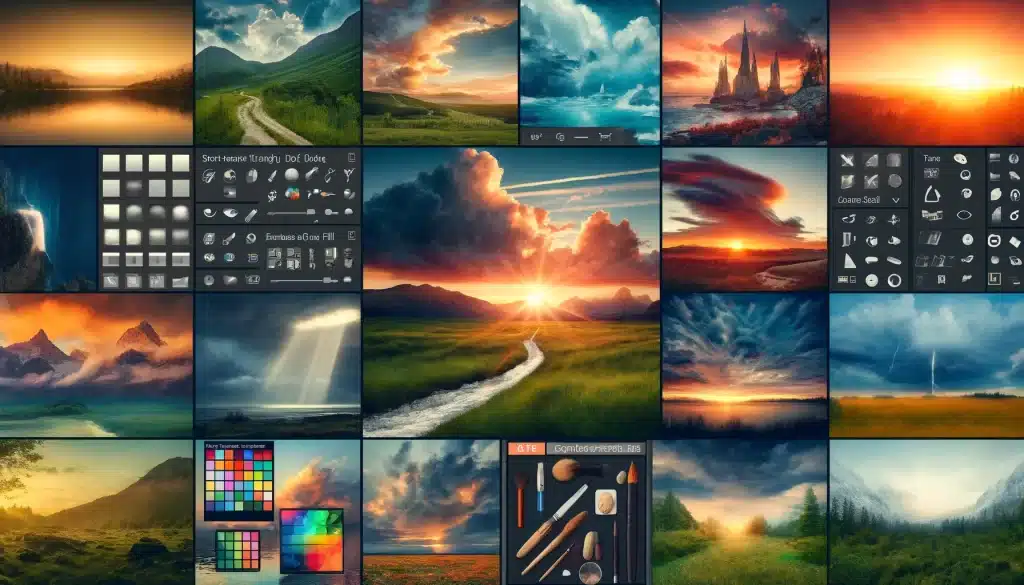
Retouching and Cleanup for Enhancing Landscape Images
- Spot Healing and Clone Stamp: Remove unwanted elements, such as distractions or imperfections (litter or distracting objects) caused by aperture settings. These tools are indispensable for cameramen who aim to present their landscapes in the most appealing and undistracted manner.
- Content-Aware Fill: Perfect for larger areas needing retouching, like those affected by shutter speed choices, blending them seamlessly with the surroundings. It intelligently fills in the space by sampling surrounding areas, making it look natural and undisturbed. It is ideal for blending in large patches of sky or grass.
Creative Enhancements in How To Edit Landscape Photos
- Filter Gallery: Experiment with different filters to add artistic effects to your landscape photographs. Filters like the 'Oil Paint' or 'Watercolor' can transform your snaps into painting-like artworks, offering a unique way to modify photographs beyond traditional adjustments. These creative tools provide an avenue for expressing artistic vision.
- Blend Modes: Utilize blend modes to creatively combine layers and achieve effects like enhancing the glow of the sunset or creating a misty morning look. Blend modes are powerful tools for cameramen looking to experiment with lighting and color. It allows imaginative and impactful alterations that can completely transform the mood of a landscape image.
| Photoshop Feature | Purpose in Landscape Editing |
|---|---|
| Channels | To separate color information in an image |
| Pen Tool | For creating precise selections and paths |
| HDR Merging | To combine multiple exposures into a single HDR image |
| Panorama Stitching | To merge several snaps into a wide panoramic view |
| Luminosity Masks | For making selections based on lightness values |
| Lens Correction | To fix lens distortions and aberrations |
| Frequency Separation | To separate image details from colours and tones |
| 3D Manipulation | For adding three-dimensional elements to snaps |
| Animation and Timeline | To add motion to still snaps |
Lists of Apps For Editing Landscape Pictures
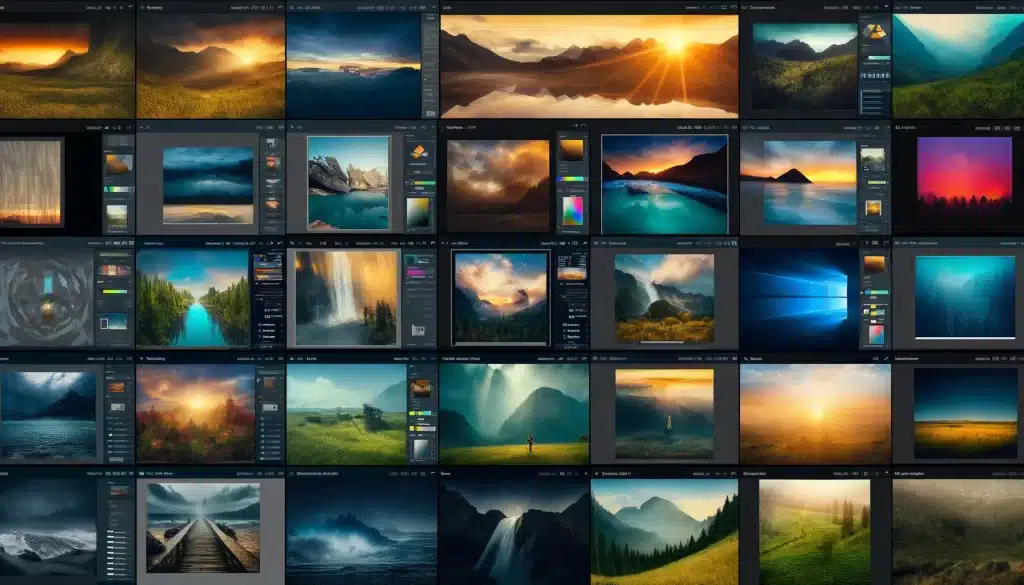
| App Name | Approx. Features Count |
|---|---|
| Adobe Lightroom | 100+ |
| Adobe Photoshop | 1000+ |
| Capture One | 300+ |
| Luminar | 100+ |
| ON1 Photo RAW | 200+ |
| DxO PhotoLab | 100+ |
| Affinity Photo | 500+ |
| Snapseed | 50+ |
| Darktable | 150+ |
| Corel PaintShop Pro | 250+ |
Using Highlights to Enhance Landscape Photography
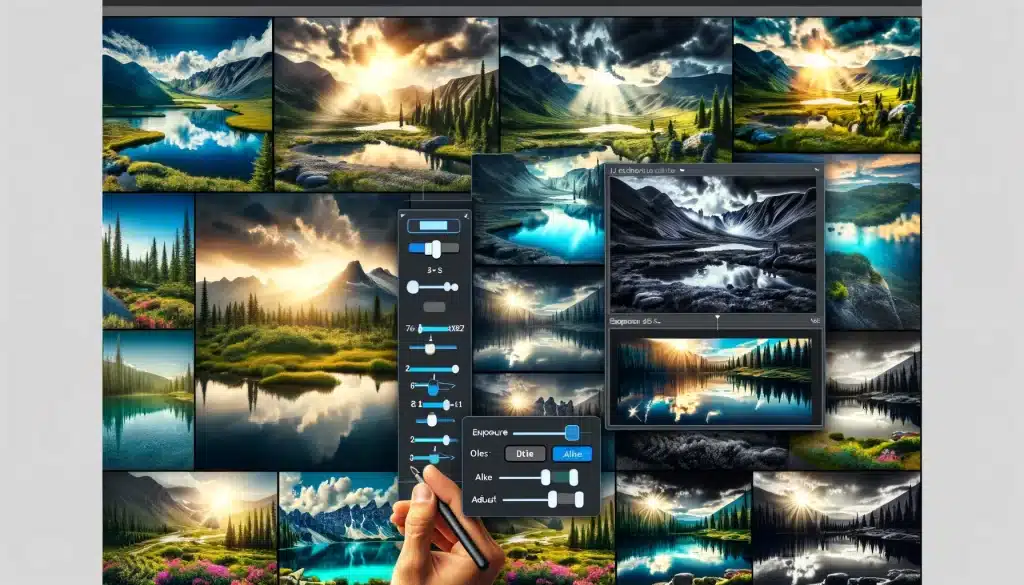
In landscape photography, it’s important to use highlights effectively. When you select areas to brighten, like the sky or reflective surfaces, it helps make the scene look great. Processing black-and-white landscapes shows this well because you can see the dark and bright areas more clearly. This makes the whole picture stand out more and look better.
Fixing the exposure slider can help lighten or darken an image while moving the saturation slider can make the colours more vivid or more muted. Sliders are essential tools in digital photo refinement because they provide a high degree of control over the visual elements of a photograph.
Using highlights strategically also involves understanding the time of day and weather conditions when capturing landscapes. Morning and late afternoon light, known as the “golden hours,” often provide soft, diffuse lighting that enhances the highlights and shadows in a landscape, creating a three-dimensional feel. On cloudy days, the overcast sky acts as a natural diffuser, reducing harsh shadows and allowing highlights to blend smoothly with the rest of the terrain.
By recognizing these natural lighting conditions and adjusting the highlights accordingly, photographers can significantly improve the emotional and visual impact of their landscape images.
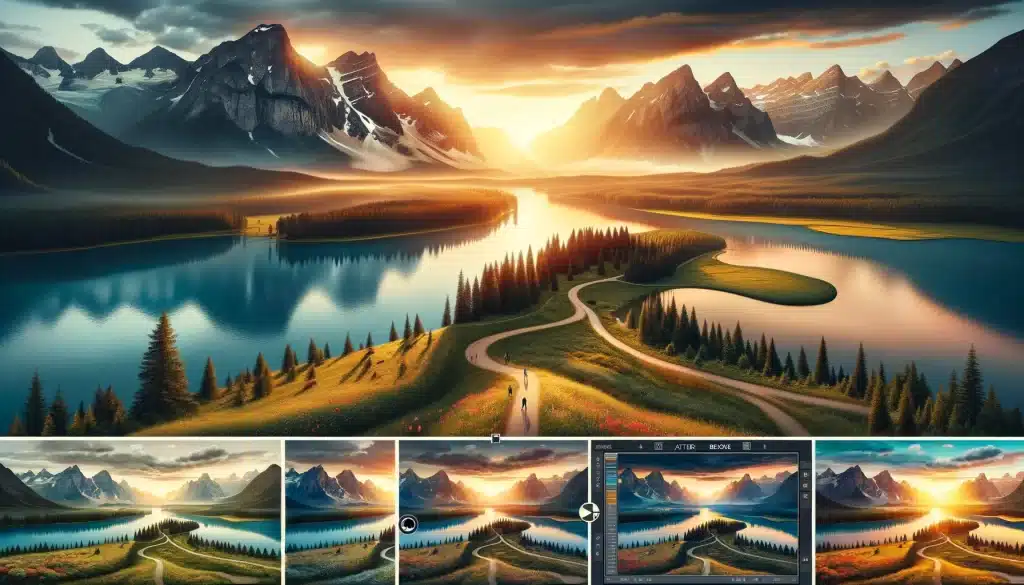
FAQs about How to Edit Landscape Photos
What is the best edit for landscape photos?
The best edits for landscape photos typically involve adjusting the brightness and contrast to make the scenery pop. Enhancing the color saturation can bring out the rich hues of the natural world, making the photo more vibrant. It’s also beneficial to sharpen the image slightly to capture all the fine details of the landscape.
How can editing enhance a landscape?
Editing can transform a landscape photo by emphasizing the elements that give it depth and character. By adjusting the lighting and shadows, you can highlight the most striking parts of the scene. Color correction and enhancement can also recreate the mood of the landscape, from the golden hues of a sunset to the cool tones of a misty morning.
Do landscape photographers edit their photos?
Yes, landscape photographers often enhance their photographs to bring their vision to life. Even subtle edits like adjusting exposure or contrast can significantly impact how the final photo conveys the scene’s beauty and drama. Editing allows you to express their artistic intent and showcase landscapes in their best light.
How to edit nature photos?
Do you want to know how to edit landscape photos, then start by adjusting the exposure to ensure the photo is neither too dark nor overly bright. Enhancing color balance is crucial for making the photo look natural while still eye-catching. It’s also important to consider cropping the photo to focus on the most compelling parts of the scene, which can change the photo’s perspective dramatically.
How do you make landscape pictures look good?
To make landscape pictures look good, focus on composition, lighting, and the time of day, often utilizing the golden hour for softer, more dramatic lighting. Enhance depth and interest by incorporating foreground elements and leading lines that guide the viewer’s eye through the scene.
Do landscape photographers modify their pictures?
Yes, they typically modify their pictures to bring out the best in their photographs. Refinement can involve adjusting exposure, color balance, and sharpness, as well as more targeted modifications like enhancing sky details or correcting lens distortions.

Conclusion
Capturing the essence of landscape photography is an art. My journey through editing landscapes has shown me the power of subtle changes, transforming a simple hillside at dusk into a mesmerizing play of light and color. Each step in the editing process is a chance to enhance the image, from selecting the perfect color balance to adjusting the brightness to create a deeper impact.
With every click, I better the composition, bringing out the vibrant hues and dramatic contrasts that were not immediately apparent in the raw shot. This methodical refinement helps to enhance the breathtaking beauty of nature, making each photo not just a picture, but a vivid storytelling piece.
Elevate your landscape photography skills with our tailored Photoshop and Lightroom courses. Each course is designed to guide you through the intricacies of editing, ensuring every landscape photo you take becomes a masterpiece.
Have a nice photoshoot!
Learn more about




